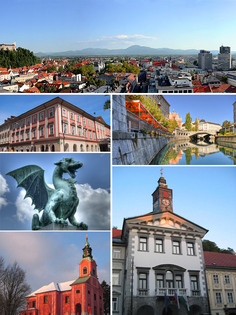A suite, in Western classical music and jazz, is an ordered set of instrumental or orchestral/concert band pieces. It originated in the late 14th century as a pairing of dance tunes and grew in scope to comprise up to five dances, sometimes with a prelude, by the early 17th century. The separate movements were often thematically and tonally linked. The term can also be used to refer to similar forms in other musical traditions, such as the Turkish fasıl and the Arab waslah and nuubaat.
Paul Peuerl was a German organist, organ builder, renovator and repairer, and composer of instrumental music.

Johann Hermann Schein was a German composer of the early Baroque era. He was born in Grünhain and died in Leipzig. He was one of the first to import the early Italian stylistic innovations into German music, and was one of the most polished composers of the period.

Johann Kuhnau was a German polymath: known primarily as composer today, he was also active as novelist, translator, lawyer, and music theorist, being able late in life to combine these activities with the duties of his official post of Thomaskantor in Leipzig, which he occupied for 21 years. Much of his music, including operas, masses, and other large-scale vocal works, is lost. His reputation today rests on a set of programmatic keyboard sonatas published in 1700, in which each sonata depicted in detail a particular story from the Bible. After his death, Kuhnau was succeeded as Thomaskantor by Johann Sebastian Bach.
The year 1700 in music involved some significant events.

Johann Gottfried Walther was a German music theorist, organist, composer, and lexicographer of the Baroque era.

Andreas Hammerschmidt, the "Orpheus of Zittau," was a German Bohemian composer and organist of the early to middle Baroque era. He was one of the most significant and popular composers of sacred music in Germany in the middle 17th century.
The courante, corrente, coranto and corant are some of the names given to a family of triple metre dances from the late Renaissance and the Baroque era. In a Baroque dance suite an Italian or French courante is typically paired with a preceding allemande, making it the second movement of the suite or the third if there is a prelude.
The year 1625 in music involved some significant events.
The 17th century organ composers of Germany can be divided into two primary schools: the north German school and the south German school. The stylistic differences were dictated not only by teacher-pupil traditions and international influences, but also by separate organ building traditions: northern organs tend to have a tower layout with emphasis on the pedal division, while southern/Austrian instruments are typically divided around a window and emphasize manual divisions.
Johann Heinrich Buttstett was a German Baroque organist and composer. Although he was Johann Pachelbel's most important pupil and one of the last major exponents of the south German organ tradition, Buttstett is best remembered for a dispute with Johann Mattheson.
Johann Krieger was a German composer and organist, younger brother of Johann Philipp Krieger. Born in Nuremberg, he worked at Bayreuth, Zeitz, and Greiz before settling in Zittau. He was one of the most important keyboard composers of his day, highly esteemed by, among others, George Frideric Handel. A prolific composer of church and secular music, he published several dozen of his works, and others survive in manuscript. However, hundreds more were lost when Zittau was destroyed by fire in 1757, during the Seven Years' War.
Johannes Thesselius was a German-Transylvanian composer of church and dance music. He came from Vienna in 1625 to be kapellmeister to Gabriel Bethlen.
Johann Christian Schieferdecker was a German Baroque composer.

Gottfried Vopelius, was a German Lutheran academic and hymn-writer, mainly active in Leipzig. He was born in Herwigsdorf, now a district of Rosenbach, Oberlausitz, and died in Leipzig at the age of 70.
Posch is a surname of German origin. People with that name include:
Johann Caspar Bachofen was a Swiss music teacher and hymn composer.

Georg Christian Schemelli was a German Protestant church musician. He is known for the publication Musicalisches Gesang-Buch, a collection of sacred songs to which Johann Sebastian Bach contributed.






